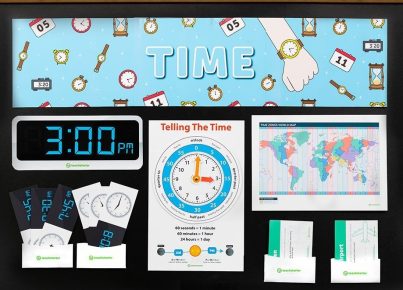Introduction to Probability: The Game of Chance
Objective:
By the end of this lesson, Key Stage 2 students will be able to understand basic probability concepts and apply them to simple real-life situations.
Materials:
– Dice (one for each pair of students)
– Coins (one for each pair of students)
– Colored spinners (one for each pair of students)
– Two different colored counters (10 per student)
– Chart paper and markers
Lesson Overview:
1. Introduction to probability
2. Demonstration of probability with dice
3. Activity: Coin Toss Experiment
4. Activity: Spinner Experiment
5. Group Discussion and Reflection
6. Probability Charades Game
Lesson Procedure:
1. Introduction to probability (10 minutes)
Introduce the concept of probability as a measure of the likelihood that a particular event will occur in a specific set of circumstances. Explain that probability can be expressed as a fraction, decimal, or percentage. Discuss examples of probability in everyday life, such as weather forecasts and sporting events.
2. Demonstration of probability with dice (5 minutes)
Distribute dice to each pair of students. Have students work in pairs to roll the die and determine the probability of rolling each number (1-6). Discuss results with the class and provide explanations on how probabilities are calculated.
3. Activity: Coin Toss Experiment (10 minutes)
Provide each pair with a coin and have them toss it 20 times, recording the results on a frequency table as heads or tails. Students calculate the experimental probabilities for heads and tails by dividing the frequency by the total number of tosses. Discuss results as a class and compare them with theoretical probabilities (50% chance of rolling heads or tails).
4. Activity: Spinner Experiment (10 minutes)
Distribute a colored spinner to each pair, ensuring there are different amounts of each color on the spinners. Have students spin the spinner 20 times, recording the results on a frequency table as colors. Students calculate the experimental probabilities for each color by dividing the frequency by the total number spins. Discuss results with the class and compare students’ spinner probabilities to their theoretical values.
5. Group Discussion and Reflection (10 minutes)
Bring the class together for a group discussion and reflection about experimental and theoretical probabilities. Encourage students to share their thoughts and observations from the dice, coin, and spinner experiments.
6. Probability Charades Game (15 minutes)
Ask students to form a circle. Assign each student a probability term or concept they learned during the lesson (e.g., certain, impossible, unlikely, even chance). Have one student at a time act out their term or concept while classmates attempt to accurately guess it. Rotate until every student has had a turn.
Conclusion:
Wrap up the lesson by summarizing key points about probability and its relevance in real-life situations. Encourage students to think of other examples of probability they might encounter in their everyday lives and challenge them to apply what they’ve learned to these situations moving forward.
Assessment:
Observe students’ understanding of probability concepts during in-class activities and discussion. Use Probability Charades as a formative assessment tool to gauge student understanding of key terms and concepts.





